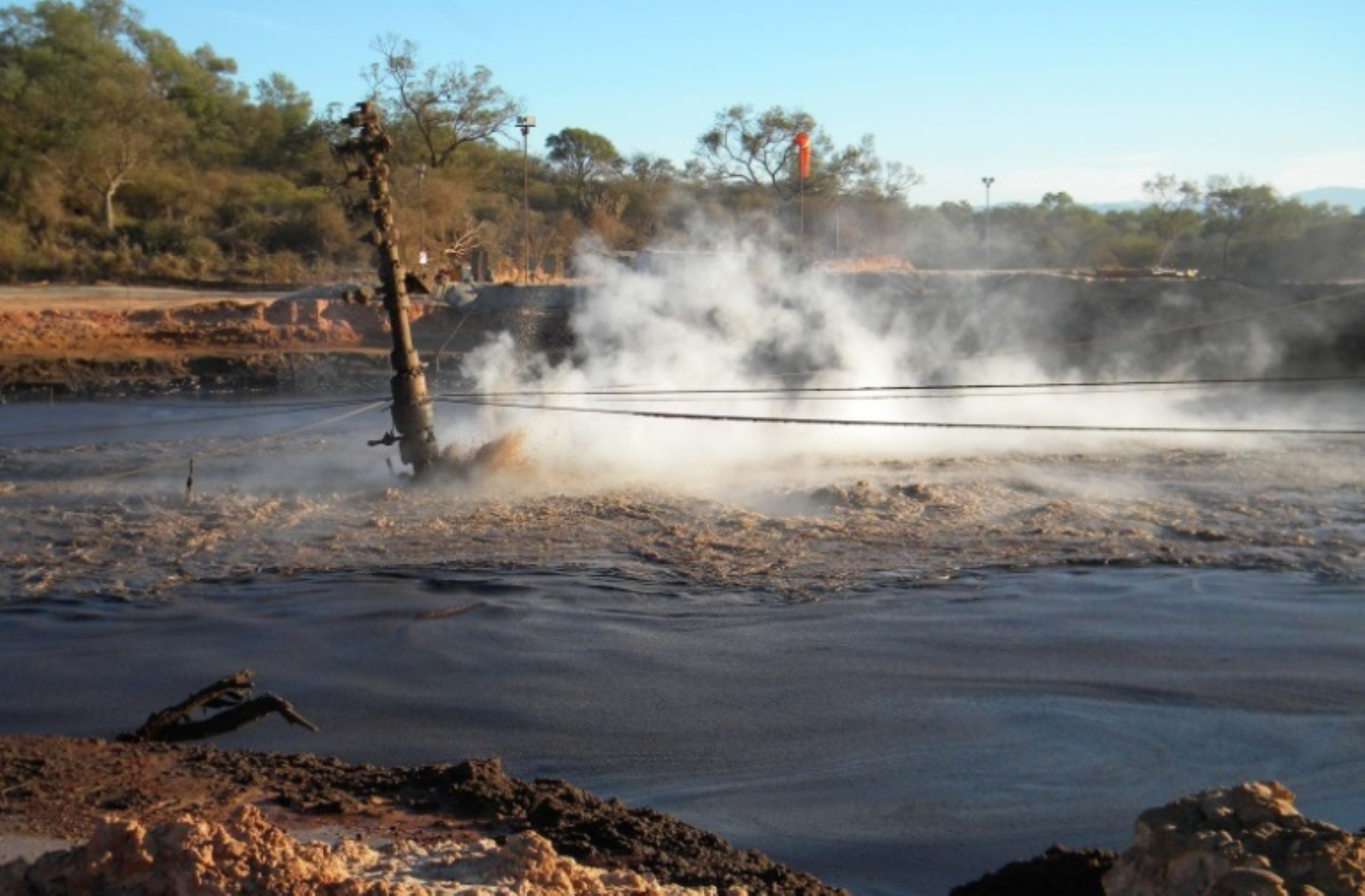 Search
Search
 Search
Search

Active magnetic ranging techniques prevail over the passive approach to accurately locate target well and drill to the interception point on the first attempt
Download PDFBlowout located in remote area, two days travel time from support facilities

Argentina

An operator suffered a blowout in a remote area 99 miles northeast of Salta, Argentina. For seven months, the operator had used a competitor’s passive magnetic ranging technology and drilled 11 sidetracks in an attempt to intercept the target well with no success. Boots & Coots was called in to drill a relief well. On the first attempt, the team successfully intercepted and killed the blowout ahead of schedule.
The blowout was located in a remote area of northwest Argentina with two days travel time from support facilities. Adding to the challenge, high volumes of water and carbon dioxide were discharged from the crater, and the survey data for the target well was extremely poor.
The location of the relief well was cleared some 180 meters (591 ft.) from the target wellhead to help ensure a safe distance from the discharging water and carbon dioxide. The limited survey data was analyzed by the survey management team and revised to be as accurate as possible. Interpolated in-field referencing was used to correct the diurnal variations of the magnetic field.
The Boots & Coots engineering team performed a detailed dynamic kill analysis in Houston. The plan called for all necessary equipment – frac pumps, kill lines, mud storage, 6,000 barrels of 12-ppg mud, and additives – to be staged and ready for the dynamic kill as soon as hydraulic communication with the target well was established. All rig personnel were briefed and prepared for the operation using a thorough risk analysis.
Attempt killed the blowout ahead of schedule
Days travel time from support facilities
Barrels of kill fluid pumped into the annulus
Barrels of cement pumped
The relief well was drilled rapidly, guided by the Boots & Coots team, which intercepted the target well on the first attempt. Careful preparation and accurate dynamic kill calculations led to the successful well kill ahead of schedule.
A total of 18 ranging runs were performed from the relief well to the target, the last one showing a separation distance of 0.3 meters (1 ft.). Interception and hydraulic communication were established at a measured depth of 2,054 meters (6,739 ft.), with mud losses as expected. As soon as the relief well went on vacuum, the upper pipe rams were closed and locked with a shut-in choke manifold. Kill operations began by displacing the annulus with 12-ppg kill fluid, followed by a 20-barrel sodium silicate pill, during which the kill rate was increased from 5 bpm to 10 bpm.
With 1,465 barrels of kill fluid pumped into the annulus, the blowout ceased, and the well was effectively killed. Post-kill operations included setting a cement retainer and pumping 74 barrels of cement.
Key success factors for the operation:
This allowed Halliburton to differentiate from competitors using their limited passive ranging tools.

Our engineers plan and execute relief well trajectories and designs.
